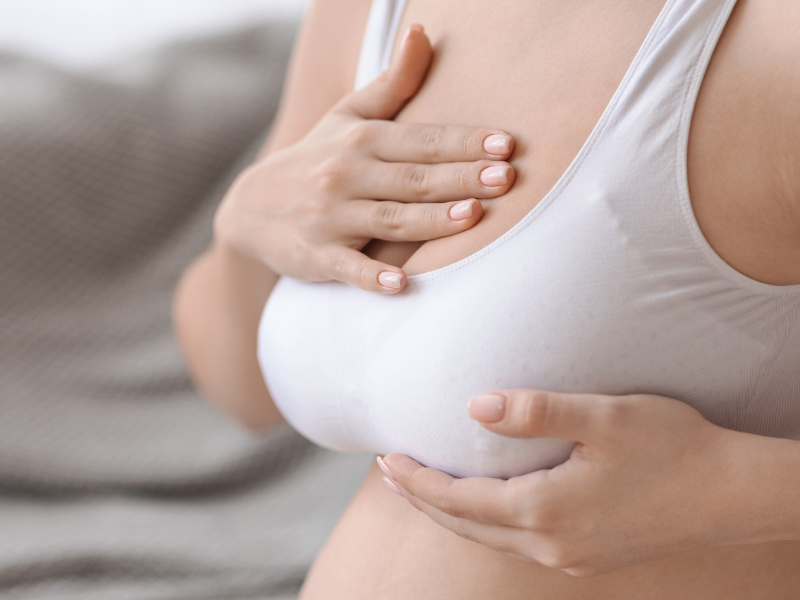The Surprising Benefits of Breast Massage While Breastfeeding
Breastfeeding can be one of the most rewarding—and most challenging—parts of new motherhood. From sore nipples to clogged ducts, many moms face a steep learning curve. But there’s one simple technique that more and more lactation experts are recommending: breast massage.
Gentle breast massage during breastfeeding or pumping isn’t just about comfort. It can help boost milk flow, ease pain, and prevent common issues like engorgement and mastitis. Even better? It may improve the quality of your milk, too. Whether you’re a first-time mom or a seasoned pro, understanding the benefits of breast massage might just change your breastfeeding experience for the better.
What Is Breast Massage, Exactly?
Breast massage during lactation involves using your hands to apply gentle, rhythmic pressure and motion to your breast tissue, often in the direction of milk flow (toward the nipple). This can be done before, during, or after nursing or pumping, and it doesn’t have to take long—even a few minutes can make a difference.
There are different techniques, like:
- Traditional Breast Massage (TBM): Gentle circular motions and light pressure.
- Integrated Breast Massage (IBM): Combines massage, compression, and heat to relieve clogged ducts. (Pongrojpaw et al., 2022)
- Oketani Method: A structured technique developed in Japan, focusing on lymphatic drainage and pressure points. (Morton & Bay, 2015)

The Top Benefits of Breast Massage
1. Helps Increase Milk Supply
Massage can stimulate the release of oxytocin—the hormone that triggers your milk let-down reflex. (Uvnas-Moberg et al., 2001) When combined with nursing or pumping, massage can help your breasts empty more effectively, which sends the signal to your body to produce more milk. Some studies have even shown that massage can increase the amount of milk expressed.
“I started massaging for a few minutes before pumping and saw a noticeable difference in output. Game changer!” — Sarah, mom of two
2. Improves Milk Quality
In one study, breast milk was found to have increased levels of solids, lipids, casein, and overall energy when moms used breast massage. (Ueda et al., 1996) This means the milk wasn’t just more abundant—it was also more nutritious. The only thing that didn’t change was lactose content, suggesting that massage may boost the milk’s value without affecting its sugar content.
3. Prevents and Relieves Clogged Ducts
If you’ve ever felt a hard, painful lump in your breast while nursing, you know the frustration of a clogged duct. Massage can help work out the blockage by encouraging milk to flow more freely through the duct. Using warm compresses before massaging can be especially helpful.
4. Breast Massage Eases Engorgement and Swelling
When your milk first comes in or if your baby skips a feeding, your breasts might feel painfully full. Massage helps move excess fluid and milk through the tissue, providing relief and softening the breast to make latching easier for your baby.
Breast massage may also improve lymphatic drainage, helping prevent fluid buildup (especially common after labor with IV fluids). This is important because swelling in the areola and nipple can interfere with a newborn’s ability to latch.
Quick Tip: If you’re dealing with swelling, try reverse pressure softening before breastfeeding. (Cotterman, 2004) This technique applies gentle inward pressure with your fingertips around the nipple and areola to move fluid away and soften the area, making latching easier.
5. May Reduce Risk of Mastitis
By keeping milk flowing and ducts clear, massage may lower the chances of developing mastitis—a painful breast infection often caused by milk stasis. If you feel early signs of mastitis (like tenderness, redness, or a low-grade fever), gentle massage along with frequent nursing can sometimes stop it in its tracks.
6. Supports Better Milk Drainage During Pumping
If you pump, you know the struggle of getting every last drop. Massaging your breasts while pumping (called “hands-on pumping”) can help you fully empty each breast, increasing overall output and reducing the risk of blockages. (Morton et al., 2009)
How to Do It: A Step-by-Step Breast Massage Guide
Here’s a simple way to get started:
- Wash your hands. Clean hands are a must.
- Warm your hands or use a warm towel. This helps stimulate blood flow.
- Apply gentle pressure. Start at the outer edges of your breast and move toward the nipple using circular motions or gentle sweeping strokes.
- Focus on problem areas. If you feel a lump or firm spot, gently massage around it in small circles.
- Combine with nursing or pumping. Massage while your baby feeds or while using a pump to get the most benefit.
- Use baby-safe oils (optional). Coconut or olive oil can reduce friction and make massage more comfortable.
Pro tip: Avoid pressing too hard—massage should never hurt. You can use your fingers, flat palm, or even your knuckles, depending on what feels most comfortable. A feeling of warmth is a good sign—it means circulation is improving.
Pressure Softening Technique Video
Using a Breast Massager
While your hands are often the best tool for breast massage, some moms find that using a breast massager—especially one with light vibration and heat—can help enhance the benefits. These devices can be useful for softening firm tissue, encouraging milk flow, or helping to clear a stubborn clogged duct. If you choose to use one, be sure to apply light pressure only, avoid direct contact with the nipple, and always follow up with gentle hand massage. Think of it as an optional support—not a must-have, but a helpful extra.

What the Research Says
Studies back up what many moms and lactation consultants already know: breast massage works.
- A randomized controlled trial found that Integrated Breast Massage helped clear blocked ducts faster and with less pain than traditional methods.
- Research has also linked massage to higher milk volumes, better milk composition, faster newborn weight gain, and greater maternal confidence in breastfeeding. (Kvist et al., 2004)
- A 2019 review noted that while more large-scale studies are needed, breast massage appears to be a safe and helpful tool for many breastfeeding challenges.
Case study spotlight: One mother with postpartum fluid retention developed breast and areolar edema so severe that her baby couldn’t latch. A lactation consultant used gentle areolar compression (a form of massage) to reduce swelling—and the baby latched successfully soon after.

When Not to Massage
While breast massage is generally safe, there are times to proceed with caution or skip it altogether:
- Suspected breast abscess or severe infection (talk to your doctor first)
- Broken or irritated skin on the breast
- Extreme pain during touch (a sign something more serious might be going on)
- Recent surgery or radiation (get clearance from your doctor or therapist)
When in doubt, connect with a lactation consultant or healthcare provider.
FAQs About Breast Massage and Breastfeeding
A: It depends! Some moms do it once or twice a day, others only when issues pop up. Even 5 minutes a day can help.
A: Some gentle massage is okay, but always check with your OB or midwife. You don’t want to overstimulate the area before your body is ready.
A: Nope! Your hands are enough. If you want, you can use a natural oil like coconut or olive oil for comfort, but it’s optional. Breast massagers are also an option, but not necessary.
A: It’s a technique where you use your fingertips to gently push fluid away from the areola, making it easier for your baby to latch.
Final Takeaways
Breast massage is a simple, low-cost tool that can make a real difference in your breastfeeding journey. From boosting milk flow to easing pain and preventing clogged ducts, it’s a hands-on way to support your body and your baby.
It may even make your milk more nutritious—raising levels of lipids, casein, and energy to give your baby an even stronger start.
And remember: you don’t have to do this alone. If you’re struggling or have questions, reach out to a lactation consultant. They can show you techniques tailored to your needs and help troubleshoot any problems.
You’re doing amazing. And sometimes, the best support comes from your own two hands.
Resources
- Find a breastfeeding support group near you.
- Milkology Breastfeeding Class – Affordable, video-based online course to help you master breastfeeding at your own pace.
References
- Ueda T, Yokoyama Y, Irahara M, Aono T. Influence of breast massage on breast milk secretion and composition. Pediatrics International.
- Pongrojpaw D, Chankhunthod J, Jampathong N, Limpaphayom N. The effect of integrated breast massage in lactating mothers with plugged milk ducts: A randomized controlled trial. International Breastfeeding Journal. 2022;17(1):67.
- Uvnäs-Moberg K, Widström AM, Marchini G, Winberg J. Release of GI hormones in mother and infant by sensory stimulation. Acta Paediatr. 2001;90(5):512–518.
- Kvist LJ, Hall-Lord ML, Larsson BW, Steen A, Schalén C. The role of breast massage in lactation: A systematic review. J Hum Lact. 2004;20(3):317–328.
- Morton J, Bay R. Management of severe breast edema impeding latch in the postpartum period: A case report. J Hum Lact. 2015;31(4):544–547.
- Cotterman KJ. Reverse pressure softening: A simple technique for temporarily softening areola. J Hum Lact. 2004;20(2):227–237.


